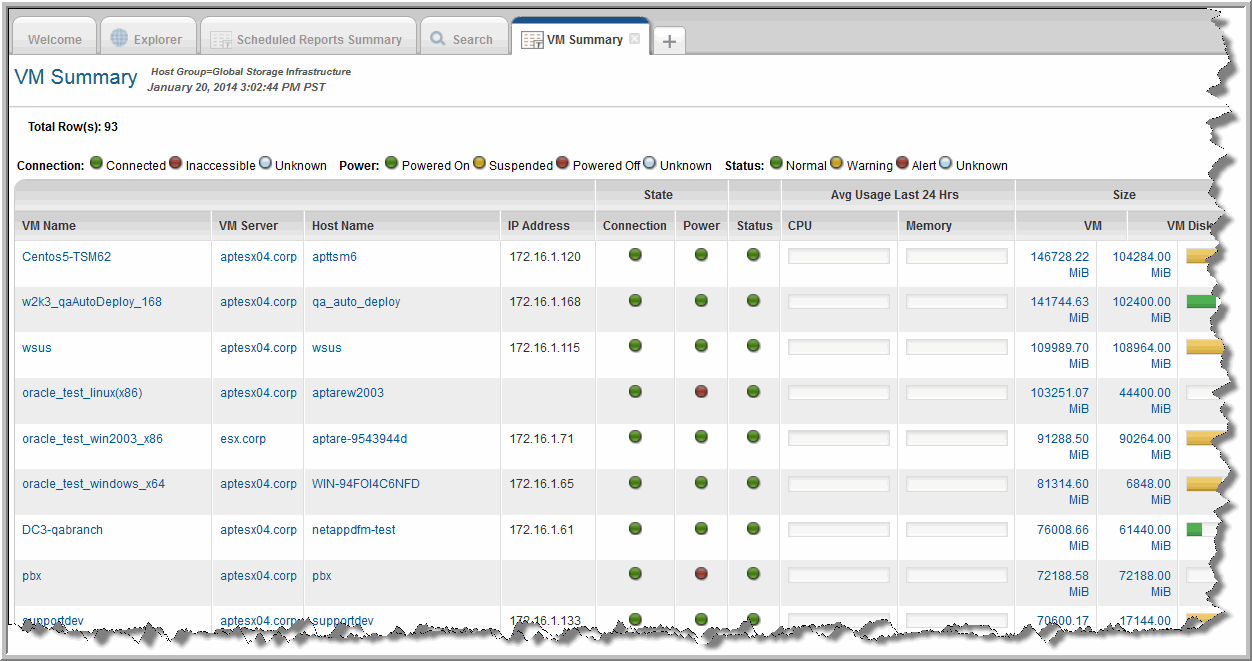Note: VMTools must be installed to enable collection of the IP address, Host name, mount points, and guest operating system of the VM.


VM Name | Name of the Virtual Machine |
VM Server | The server that is hosting the VM |
Host Name | Hostname of the guest; value is displayed only if VMTools is installed |
IP Address | IP address of the Virtual Machine; value is displayed only if VMTools is installed |
State: Connection | None, Connected, or Suspended |
State: Power | Powered Off, Powered On |
Status | This is essentially an alarm indicator that reflects the condition of the resources: Gray=Status Unknown, Green=Normal, Yellow=Warning, Red=Alert, definite problem |
Avg CPU Usage Last 24 Hours | The host’s average CPU usage for the past 24 hours for the number of samples taken within that time frame |
Avg Memory Usage Last 24 Hrs | The host’s average Memory usage for the past 24 hours for the number of samples taken within that time frame |
Size: VM | Size of the virtual machine, which includes VMDK files, log files, and snapshots; the sum of all the files taking up storage by this VM. |
Size: VM Disk | Amount of storage that was provisioned to the Guest OS when the virtual disk was originally created for the VM. For thin storage, this can be larger than the Datastore capacity associated with the VM. |
Storage: Volume Usage | This is the disk usage inside of the VM (for example, C:\, D:\) A Volume maps to logical disks, such as C:\ and D:\, as seen by the guest OS; usage for the past 24 hours for the number of samples taken within that time frame. For inactive VMs, the usage is unknown. |
Storage: Datastores | Datastores used by this VM |
Storage: Raw Device Map | Indicates if the VM is using Raw Device Mapping. |